Wireframes for complex navigation. I’m definitely going to explore these more so I can have a more developed and unique approach.
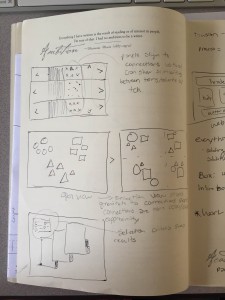
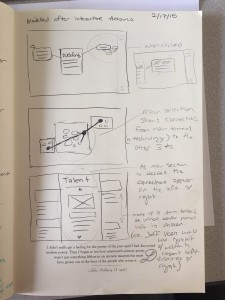
Wireframes for complex navigation. I’m definitely going to explore these more so I can have a more developed and unique approach.


I have been on the look out for fun and engaging websites. I have recently come across the San Diego Zoo Kids site that has activities and animal facts for kids. The website is a colorful, moving animals, the sound of the jungle, all of these details combine to form a fun, interactive educational space for children.
Because of this class I am learning to appreciate the finer details of websites and how they are constructed. The large navigation buttons, bright colors, and textured background are appropriate for the target audience. There’s a lot going on and could be toned down but it does achieve the excitement

Even though we just began coding our designs, I already know there is going to be a lot of trial and error. The practice in class with the board and wireframes was incredibly helpful. I made a quick layout for myself so I don’t get lost when I’m attempting to code my designs. Organization is obviously key and I am slowly going through all of my layers to name everything properly for the next attempt at coding.

What today taught me is to be very careful with how I organizing my files, designs and code. I have a tendency to create an unnecessary amount of the same files, which leads to a confusing mess. Getting used to having a strict system will alleviate the already confusing process to a more manageable level. I feel that the following quote illustrates how important it is to be organized while coding:
“Always code as if the guy who ends up maintaining your code will be a violent psychopath who knows where you live”
― John Woods
Brief Observations
The more labs I complete the more the content from the book makes sense. Simply reading how tags work and the benefit of inheritance was to abstract for the ideas to really stick.
Beautiful Type Project
I am glad the focus is on webfonts and typography meets technology. I am usually more conservative when it comes to typeface selection, I like to use a single typeface with many variations. There are times I combine various fonts so I can have the best of certain classifications: mixing a dramatic display font with the legibility of sans-serif for body copy. Typecast has been a great tool to see the visual relationship between different typefaces.
My initial designs have used varying styles of Museo Slab, 300, 500, and 700. Even though the typefaces were from Typekit, I found a reasonable alternative with Arvo. I am going to move forward with my designs in Arvo and pair the slab serif with a sans-serif and script typefaces.
4T’s Presentation
My Wednesday presentation PDF is available through this link.
Jeffery Veen is an entrepreneur based in San Francisco, California. He sees potential in fledgling ideas and turns those into business opportunities. With Typekit he and his fellow co-founders Bryan Mason, Ryan Carver, and Greg Veen focused on the disconnect between the newly introduced @font-face which allowed web designers control over typefaces in web design and concerns about intellectual property. Font designers wanted to retain control of their art and web designers needed a simplified licensing system to navigate. Although the original Typekit team have worked together before on projects, an online business the size that would have an actual impact on the design community would take a significant amount of financing.
Veen became CEO of Typekit because of his a team oriented design. His most successful endeavors are the projects he envisioned and developed with a team of strong designers and engineers. While developing the idea of Typekit, Veen was also dividing his focus to his other two companies he helped found: Adaptive Path which went on to create Measure Map. Adaptive Path was a user experience company that operated as both a consultant and design firm. Measure Map was an analytical tool for blog users that was picked up by Google. While at Google he reorganizing the Google analytics and was the leader of the UX team involved in Google App’s. Veen was part of many collaborations while trying to launch a new innovative concept.
His earliest contribution to the web was his help founding the first commercial web magazine, HotWired in 1994. The magazine originated out of the same company that produced Wired, but HotWired was its own separate entity. The following five years after the web magazine launched other sites branched off such as Wired News, Webmonkey, The Nietzen and Suck. The business model was corporate sponsorship, which is seen today in the form of ad banners on websites. Veen’s web development provides an interesting glimpse into what problems early web designers faced and how the internet landscape has so drastically changed. With his extensive experience in web design Veen has authored two books HotWired Style and The Art and Science of Web Design.
When Typekit was purchased by Adobe in 2011, Veen became the Vice President or Products. He was part of the process of adopting Adobe to a cloud based service. In 2015 he moved on to work as a design partner at True Ventures, a venture capital firm that invests in early tech startups. As a maker of things Veen is familiar with the process of designing for audiences and he has come full circle to now become the investor in original ideas.
“We invest in Founders of movements and products that capture the imagination.”
True Venture quote.
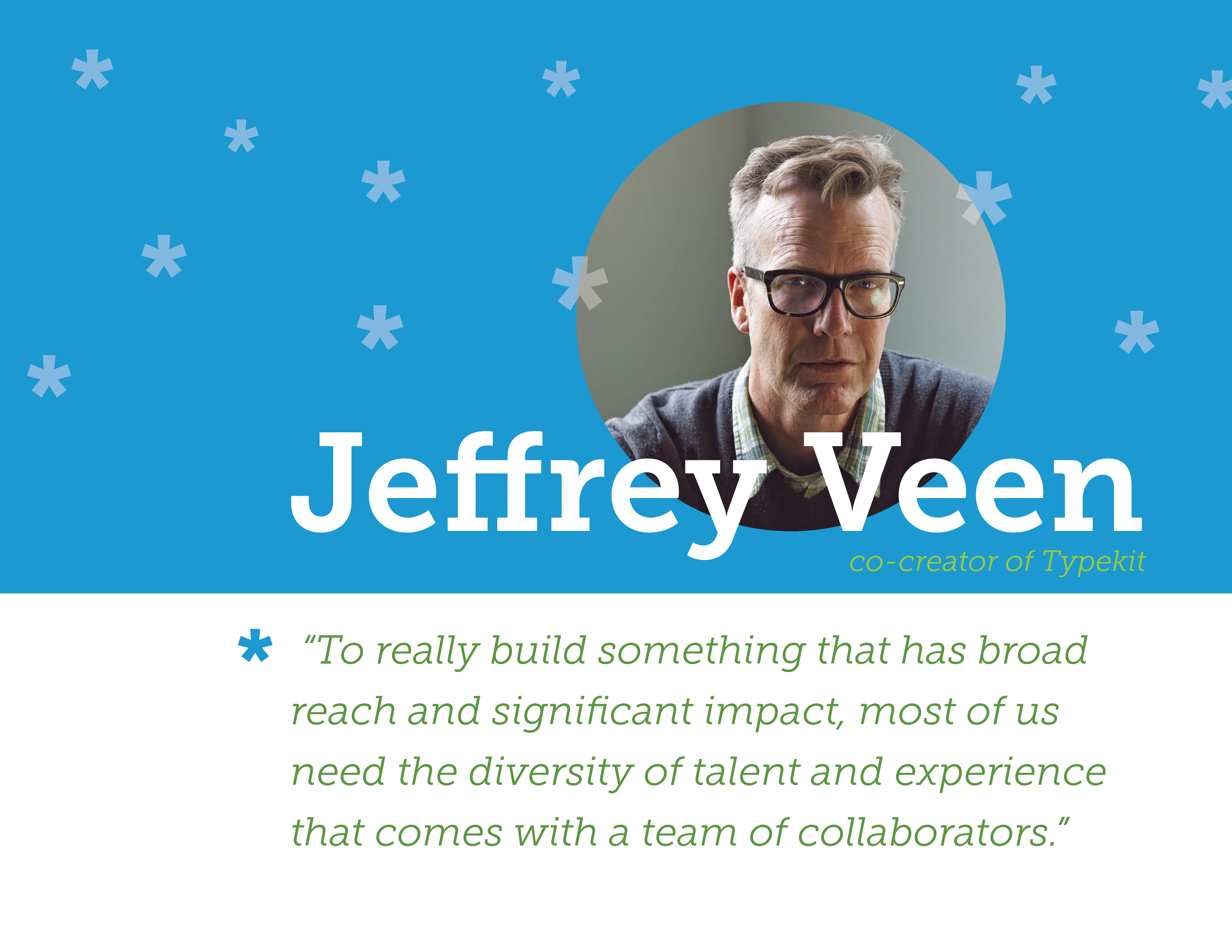
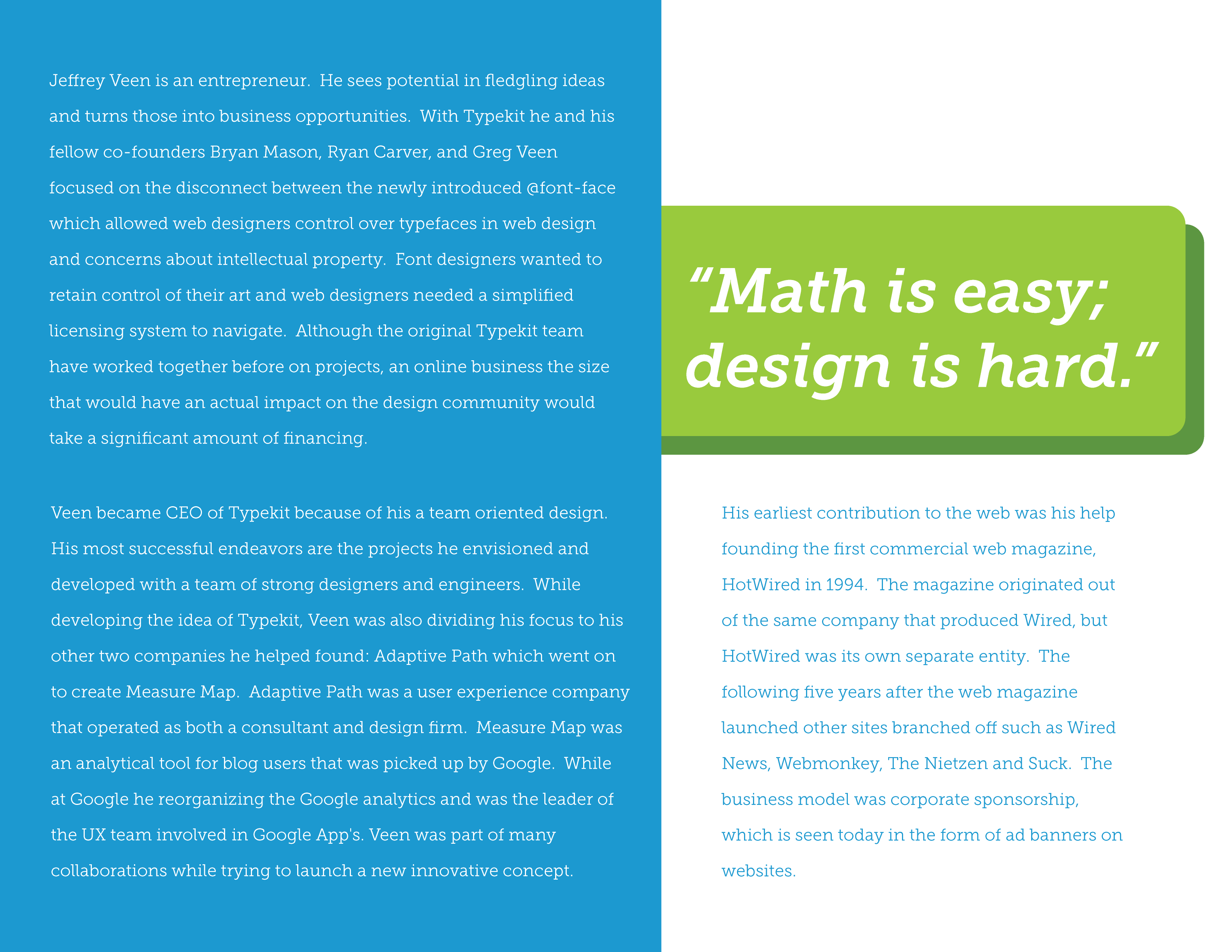
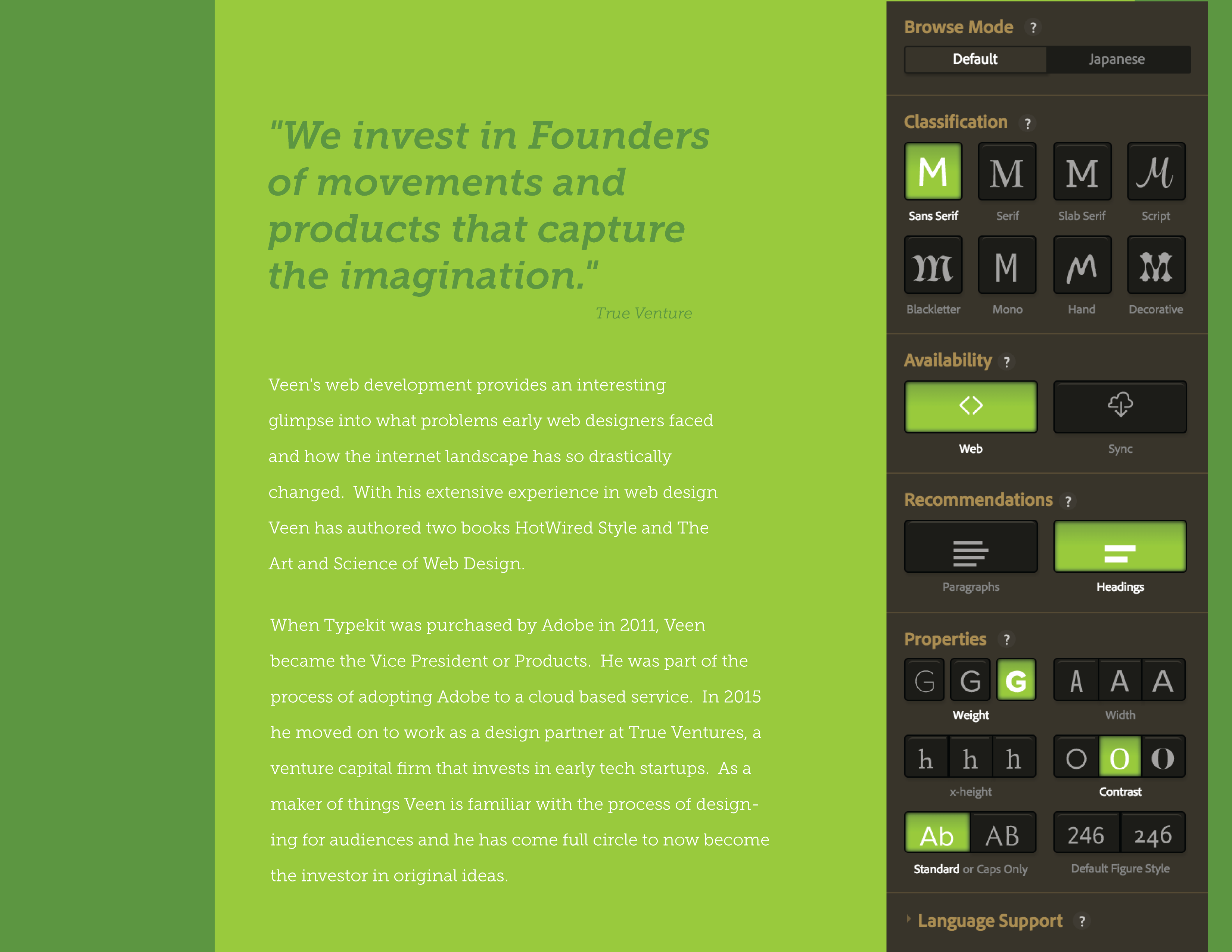
Works Cited
https://www.linkedin.com/in/jeffreyveen
http://www.veen.com/jeff/archives/investors.html
http://www.veen.com/jeff/archives/000799.html
http://thegreatdiscontent.com/interview/jeffrey-veen
https://trueventures.com/
For Technology I have researched Typekit, an online service that is currently owned by Adobe and was co-created by Jeffery Veen. Typekit was launched in 2009 before being purchased by Adobe in 2011. The online library of web safe font has revitalized typography.
Typekit allows subscribers to utilize beautiful, high-quality webfonts. With a subscription, fonts can be used under a single licensing agreement with the Typekit font library, which has more than 1,100 typefaces from a variety of type designers and foundries. This one step access allows designers to use these fonts without having additional licenses with individual foundries.
Typekit makes it easy to search and find typefaces based on visual characteristics. Classifiers like serif and mono, properties like weight and width make narrowing the selection easy and efficient. With already compiled lists of alternatives to well known fonts like Helvetica and Georgia are great starting point when users feel overwhelmed by the choices. The searchability of Typekit’s library is a streamlined process and a major strength of the platform.
When I have been designing these definition pages I used Typekit to find a typeface that blended the beauty of print based type with technology. I decided on Museo Slab because of the variation within its font family and its strong characteristics. The closest webfont on Google Font is Slabo 13px, which doesn’t have any variation and is on the thicker side. Hopefully the change won’t be that dramatic in the final iteration!

Early homepage of Typekit highlighting how revolutionary webfonts will be for designers and the future of web design.
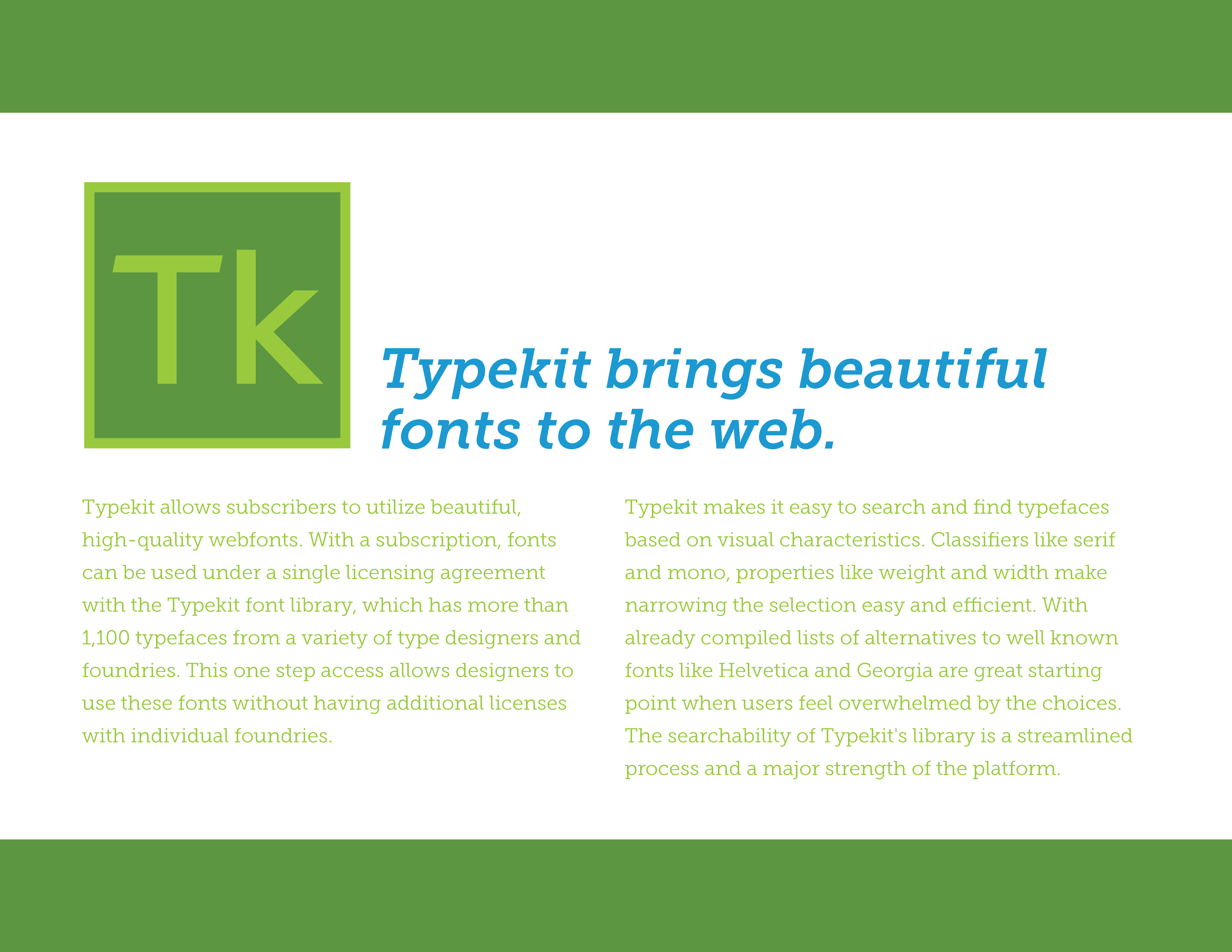
Typekit’s new logo is now compatible with the look and feel of Adobe, although the subscription service is still available without purchasing further Adobe software.
I am constantly amazed by how a small mistake (like using a : instead of ; ) can have a huge impact on how the code will work or not work. I really enjoyed learning about internal and external file sheets, which will make editing future code so much easier. The in-class practice with dreamweaver emphasized how much easier it is to learn how to code by actually implementing what I have been reading in The Missing Manual.
Each new idea that I have been introduced to during the past few weeks is slowly starting to make more and more sense. I am eager to see what I can accomplish by the end of the semester.
In Class
Wednesday was a content packed class. I enjoyed the mixture of learning material, from the book to Code Academy I definitely learned a lot. When everything is going well, coding can be very calming. The opposite is also true though so I am grateful that we are gaining a basic understanding of how coding functions and why it operates the way it does.
Research
For the first project I am excited to explore Webfonts, Jeffery Veen and www.Typekit.com. Before Typekit and other services that link type on a website to the correct typeface, designers were limited to using still files or GIFs of their desired type. When a page is coded the typeface is specified, the typeface is embedded and then the page is then viewable from a visitor’s computer. The problem comes from the fact that this unfortunately breaks several copyright laws about distributing intellectual property. That’s where Jeffery Veen’s Typekit comes in. Typekit was created in 2009 to allow designers access to beautiful type for the web, all it takes is a subscription. Although there are other platforms that offer webfonts (Google, Fontdeck, font.com) the Typekit’s connection to Adobe and revolutionizing what type could exist as on the web allowed Veen’s company to dominate the field.
Works Cited
http://blog.typekit.com/2009/05/27/introducing-typekit/
http://www.creativebloq.com/netmag/jeff-veen-typekit-and-web-fonts-10116738
http://www.motive.co.nz/glossary/webfonts.php
http://www.w3schools.com/cssref/css3_pr_font-face_rule.asp
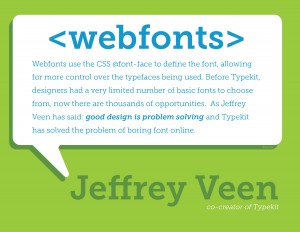
I can already tell this is going to be a stressful but rewarding experience. Stressful because I am already facing coding problems (how hard is it to change a font color?) and rewarding because of how important interactive design is in today’s world.
I will greatly enjoy learning about the history of web standards and Matt Mullenweg’s vision for an accessible and functional CMS. The structure of WordPress is hopefully going to make learning the functionality of coding easier for me. I am looking forward to the end of this semester when I will have a completed online portfolio site.